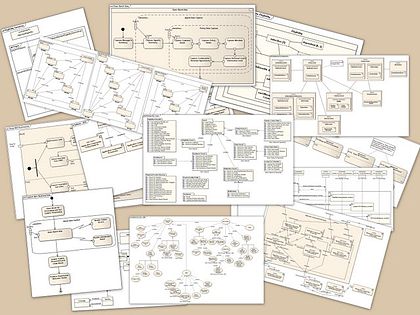
“UML (Unified Modeling Language) is a standard notation for the modeling of real-world objects as a first step in developing an object-oriented design methodology.”
It was born in 1997, its parents are:
- Grady Booch’s methodology for describing a set of objects and their relationships
- James Rumbaugh’s Object-Modeling Technique (OMT)
- Ivar Jacobson’s approach which includes a use case methodology
Three parents, huh? Well, it’s software engineering, everything is possible. As you could see, the parents are methodologies and techniques, who decided to get together to create a Language! That’s the reason why UML has been so accepted, because it is more adabptable to everyone, while methodologies, occasionally, can be impossible to fit with some companies and people.
Some sources say that it’s not a language, but a set of norms, I disagree with that. Because UML was made to make easier the understanding and communication of a project. like the definition says, it’s a standard who everyone can use. It’s not necessary, but it’s definitely more convenient than using any other model.
The UML uses diagrams to represent objects -yes, diagrams, because we’re engineers, duh-. Some of them are:
- Use-case diagram
- Class diagram
- Sequence diagram
- Statechart diagram
- Activity diagram
- Component diagram
- Deployment diagram
UML is most commonly used in high level projects, but I think it’s a good idea to start using it in any project so you can understand how it works and to know its benefits.
Source:
- http://www.ibm.com/developerworks/rational/library/769.html
- http://www.aprenderaprogramar.com/index.php?option=com_content&view=article&id=688:ique-es-y-para-que-sirve-uml-versiones-de-uml-lenguaje-unificado-de-modelado-tipos-de-diagramas-uml&catid=46:lenguajes-y-entornos&Itemid=163
- http://searchsoftwarequality.techtarget.com/definition/Unified-Modeling-Language
